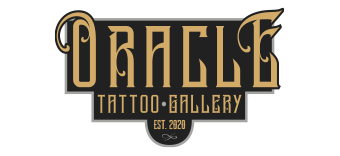Needle Selection: Why Tattoo Artists Choose Certain Needles
In recent years, tattoos have become a form of self-expression and individuality. In order to achieve intricate designs and out of this world detail, tattoo artists have more than color at their disposal. They also have a variety of tattoo needles to use. If you have ever gotten a tattoo and wondered if there was a difference between needles, there is. So, today, let’s discuss why tattoo artists choose certain needles when inking your skin. Next time you have a tattoo appointment, surprise your local tattoo shop in Philadelphia with your knowledge!
The Different Kinds of Tattoo Needles
Tattoo artists have several needles at their disposal to create a masterpiece, but some choices are better than others for specific tattoo styles. An experienced artist knows that the choice of needles is a crucial consideration that may impact the line quality, shading effects, color saturation, and overall visual aesthetic of the final image. Here are the needles that they will most commonly reach for when working on a client’s piece:
Round Liner Needles
These needles consist of a group of tightly packed, small-diameter needles arranged in a circular configuration. The round liner needles allow for precise and controlled lines, helping artists create well-defined outlines or crisp details.
Magnum Needles
Magnum needles, also known as magnums or mag shaders, are commonly used for shading large areas of a tattoo or when creating depth, color transitions, and gradients. These needles feature multiple needle points arranged in a flat or curved shape, creating a larger surface area. Magnum needles allow tattoo artists to achieve smooth and consistent shading by depositing more ink in a single pass.
Round Shader Needles
As the name implies, round shader needles are for shading. Similar to regular round needles, these ones are tightly packed and have a small diameter. However, round shaders come with far more needle points, allowing for greater coverage and saturation. These needles are effective at covering larger sections of skin while maintaining color consistency.
Single Needles
The aptly named single needle tattooing allows artists to create intricate designs, delicate textures, and fine lines with exceptional accuracy. It is commonly employed for adding small, intricate details and achieving highly realistic effects in the tattoo.
Flat Needles
Also known as magnum flat or weaved magnum needles, these needles have multiple points arranged in a single straight line. Flat needles are used for specific shading techniques, such as achieving a “whip shading” effect or creating parallel lines. They are versatile and can be used for both shading and coloring, providing a different texture and style to the tattoo.
Curved Magnum Needles
You may also hear tattoo artists call this kind of needle a curved mag shader. Like magnum shaders but curved, this configuration is made for tattooing body contours and curving lines. These are primarily used when shading or coloring tattoos on places with curvature, like arms, shoulders, and legs.
Textured Needles
Although less common than the others listed above, there are also needles that have dimples or small grooves on the taper. Therefore, textured needles can hold more ink and require less dipping into ink cups during the procedure, making them suitable for color packing.
What About Taper Length?
The taper length refers to the length of the point at the very end of each needle. While the taper length does not affect the depth of penetration into the skin, it does influence the ink flow rate. Needles with longer tapers release less ink at a slower rate, making them suitable for finer and delicate work. In contrast, needles with shorter tapers deliver more ink at a faster rate, making them ideal for bolder lines and colorwork.
Common taper lengths include standard (short) taper (1.5mm), long taper (2.0mm), double long taper (2.5mm), extra long taper (3.5mm), super long taper (5.5mm), and super extra long taper (8.0mm).
When Specific Needles are Used During a Tattoo Session
Now it is time to shed light on how and when these tattoos are used during a session. As you may be aware, there is more to tattooing than meets the eye. Depending on the complexity of a tattoo, there may be multiple steps involved.
Outlining Stage
The first phase of tattooing involves creating an outline of the design. This stage is critical as it establishes the tattoo’s structure and serves as a guide for shading and coloring later on. During the outlining stage, tattoo artists typically opt for round liner needles. These needles are tightly grouped together and feature a circular configuration, allowing for precise and controlled lines. The use of round liners ensures clean outlines that will serve as the foundation for the tattoo’s overall aesthetic.
Shading Stage
Once the outline is complete, the shading stage begins, adding depth, dimension, and texture to the tattoo. Tattoo artists employ a variety of needle configurations for shading, with magnum needles being a popular choice. Magnum needles consist of multiple needle points arranged in a flat or curved shape. The larger surface area covered by magnum needles allows for smooth and consistent shading, making it easier to achieve gradients and create soft transitions between light and dark areas.
Coloring Stage
Now your tattoo is truly coming to life. During the coloring stage, your tattoo artist works on adding personality to the image by bringing in colors. Tattoo artists commonly use round shaders during this phase. Similar to round liner needles, round shaders are tightly grouped in a circular formation, but they have more needle points. This configuration allows for better ink saturation and coverage, ensuring bold and solid colors. The round shader needles are adept at filling in larger areas efficiently while maintaining color consistency.
Detailing Stage
This is the final part of a tattoo session where the artist adds in the remaining touches. To achieve this, they often employ single needle configurations during the detailing stage. Single needle tattooing allows for utmost control, enabling artists to create fine lines, delicate textures, and intricate designs. These needles provide the artist with the ability to capture the smallest details accurately, resulting in an exquisite final product.
Looking For a Tattoo Shop in Bensalem or Philadelphia?
Tattoo artists are true artisans, carefully selecting their tools to achieve remarkable results. The choice of needles at specific times during the tattooing process plays a vital role in creating a visually stunning and well-executed tattoo. From the precise lines of the outlining stage to the smooth shading, vibrant colors, and intricate details, each needle configuration serves a purpose in bringing the artist’s vision to life.
If you want to see how these needles are key in turning your tattoo idea into reality, give Oracle Tattoo Gallery a call at 215-638-1601 or send us a message to book your consultation.


